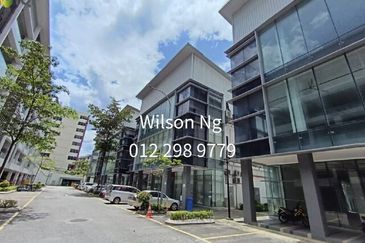
This is part 2 of a 4-part series in addressing this unique Property Investment Quadrant (PIQ). The “Sell” quadrant is an exact mirror to the “Buy” quadrant introduced to you in the previous article.
As a smart property investor, you can easily flip the six “Buy” suggestions that you have learned in the past article to “Sell”, in addition to these six “Sell” suggestions that we are addressing in this article. Of course, you can easily switch the “Buy” suggestions to “Sell” too.
These suggestions are by no means exhaustive but they offer you greater options to stay on top of this game of property investment — the investment that rewards most often. After all, it is the fittest that stay on course and complete the race.
Sell is all about exit, but we can certainly stretch the concept of a sale to cover the different “dimensions” related to a sale such as the length of settlement, the mode of payment, the type of financing, and the variation of sales channels to selling in parts and not as a whole. To sell, we could also look at expanding the usage of the property to increase its value and even raising its appeal to a larger market of buyers.
Here are six suggestions on alternative ways you could sell your property.
1. Rent to own
An existing user is always the best possible purchaser for your property. Target your tenant as someone who has been in your property for a considerable time, as he/she probably has a certain liking to the property to have rented it in the first place. Besides, human nature is such that no one really enjoys “moving” houses particularly after having established and enjoyed the convenient support system in the location.
By giving the tenant the option to purchase at the end of the tenancy, the owner/investor has effectively secured a committed tenant to see out the entire tenure while allowing the tenant to save up enough during the tenancy period to pay the deposit for the purchase as well as improve his/her credibility to procure a bank loan at a higher margin.
On top of that, it will motivate the tenant to take better care of the rented property as he/she would be the eventual owner. Locking in a pre-determined sale price would reduce the volatility of the market too. It’s a win-win formula for the landlord and tenant.
2. Repurpose the property
Investors love to dispose of their properties at the highest possible price, and one of the ways to do this is to expand the usage of the property, thus adding to its value.
Investors must do some homework in this regard — for example, checking the permitted usage zoning updated from time to time by the local council and work within it. An ordinary residential unit with main road frontage would immediately increase in value if it can be repurposed as a commercial showroom.
Hence, investment to convert the permitted usage as well as to refurbish the property is worthwhile, considering the increment in valuation subsequently.
3. Partial sales
It could be that you own a multi-storey shophouse and you effectively only use the ground floor for your business, making the upper floors unnecessary for you especially if the rental return is not desirable.
If the property is owned through a company set up solely for this purpose, you can unlock the value through the sales of shares proportionate to the value of each floor. Of course, you would need to invest in a carefully drafted shareholder agreement to regulate the relationship of the different floor owners who hold a certain number of shares in the company. This could also be a useful remedy to a foreign purchaser who is otherwise restricted to purchasing property below a certain pricing threshold set by the different states.
Having a minority ownership of a company that owns the property and making references to the usage of a part of it is certainly permitted.
4. Owner financing
These days, a lot of sales cannot be completed due to the inability of the purchaser to obtain financing from conventional financial institutions.
If the seller is not in a hurry to get a lump sum purchase price, one can consider stretching the sale completion period for as long as the purchaser, through his own source of funding, is paying the entire purchase price, provided that the seller is compensated with a higher purchase price for the extended period. With a willing buyer and a willing seller, this arrangement could offer better returns to the seller in the long run.
5. Property swap
There is a common practice in the car industry called “trade in”. The basis of the negotiation is one that facilitates exchange in kind by addressing the differences in the market values of the properties involved in the swap. It could be for an upgrade or even for the ease of management due to their locations. This effectively solves the issue of looking for two purchasers for two properties. Lengthy negotiation is required but it is not impossible and more likely to happen in the secondary market.
6. Beyond agents
This addresses the issue of sales channels. With today’s technologies, you can easily sell a property on your own as the owner instead of going through an agent.
Many property-listing sites are available and you can easily manage your marketing campaigns on different platforms, conventional or digital.
Experiencing selling property on your own by familiarising yourself with the environment through attending viewings and repeated site visits can easily trigger new ideas in selling your property.
Going through these options and suggestions may have tickled your innovative mind. As the old saying goes: There is no right or wrong way to sell as long as the property sells (and not prohibited by law). Now, watch out for part 3 of this 4-part series.
If you have any property-related legal questions for Tan, please go to the Tips section of TheEdgeProperty.com.
Chris Tan is a lawyer, author, speaker and keen observer of real estate locally and abroad. Mainly, he is the founder and now managing partner of Chur Associates.
Disclaimer: The information here does not constitute legal advice. Please seek professional legal advice for your specific needs.
This story first appeared in TheEdgeProperty.com pullout on Aug 11, 2017. Download TheEdgeProperty.com pullout here for free.
TOP PICKS BY EDGEPROP

Hexa Commercial Centre
Desa Petaling, Kuala Lumpur
























